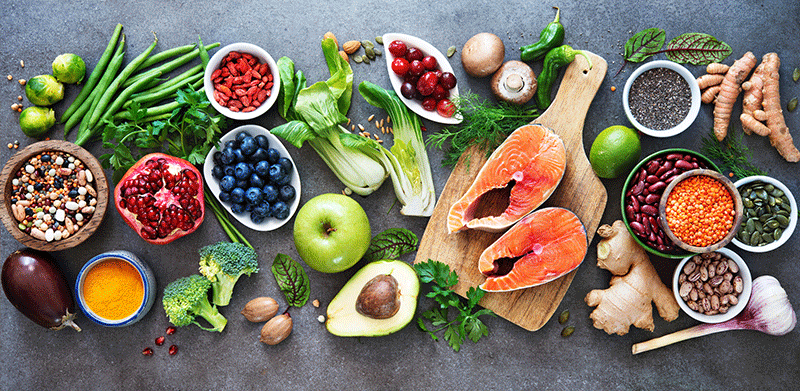How Can I Eat More Nutrient-Dense Foods?

What Does Nutrient Dense Mean?
Nutrient-dense foods are rich in vitamins, minerals and other nutrients important to our health. They also don’t have too much saturated fat, added sugars and/or sodium. Nutrient density is the amount of nutrients you get for the calories consumed. Research suggests that the standard American diet is energy-rich and nutrient-poor. When we say energy, we mean calories. And “empty calories” are in foods that provide a lot of calories without much nutritional value.
For a nutrient-dense and heart-healthy dietary pattern:
- Eat a variety of fruit and vegetables.
- Eat whole grains.
- Include healthy sources of protein, mostly from plant sources (legumes and nuts), fish and seafood, fat-free or low-fat dairy, lean cuts of unprocessed meat and skinless poultry.
- Eat nuts and legumes.
- Limit red and processed meats, sodium, added sugars and alcohol.
One of the tools you can use to choose more nutrient-dense foods is the American Heart Association’s Heart-Check mark. When you see the mark, you can be confident the product aligns with our recommendations for an overall healthy eating pattern. The Heart-Check mark considers beneficial nutrients as well as nutrients you should limit, making it quick and easy for you to make a healthy choice.
When a Heart-Check certified option isn’t available, read and compare Nutrition Facts labels and choose the best option. For example: Let’s say you’re looking at the Nutrition Facts labels of two packages of bread to decide which one is the healthier choice. The white bread has about 80 calories per slice, but few vitamins and minerals. The whole-grain version has about the same number of calories, but more protein, three times the magnesium, and more than double the fiber, potassium, vitamin B6 and zinc. The nutrition information shows that the whole-grain option is the more nutrient-dense choice.
How to Add Nutrient-Dense Foods to Your Healthy Eating Plan
Sometimes it only takes a small shift to make a more nutrient-dense choice. Here’s how you can get started:
- Switch from white bread, rice and pasta to whole-grain pasta, whole-wheat bread and brown rice.
- Instead of a dollop of full-fat sour cream on your chili or baked potato, try fat-free or low-fat plain Greek yogurt.
- When adding toppings to pizza, stuffing tacos or piling up sandwiches, add an additional veggie instead of extra meat or cheese.
By making some simple swaps in your favorite recipes, you can easily boost the nutrient density of your family’s meals and snacks.
What about snacks?
Most of us, including kids and adolescents, get a significant portion of our daily energy (calories) from snacks. Traditional snack foods, such as chips, cookies and crackers, and drinks, such as sodas and sports drinks, can be high in calories, saturated fat, sodium and/or added sugars but low in nutrient density.
When snacking, choose mostly nutrient-dense foods, such as fat-free or low-fat dairy products as well as a variety of fruits and vegetables and nuts.
- Snack on crunchy vegetables with a fat-free or low-fat yogurt-based dip.
- Eat a handful of unsalted nuts instead of chips.
- Satisfy a sweet tooth with naturally sweet fruit on its own or in a smoothie instead of candy and cookies.
- Replace sugary drinks with water infused with fruit and/or herbs, or unsweetened tea or coffee.
The Takeaways
- Choose more nutrient-dense foods to get the beneficial nutrients your body needs without consuming too many calories.
- Focus on your overall eating pattern, rather than individual nutrients or specific foods or food groups.








